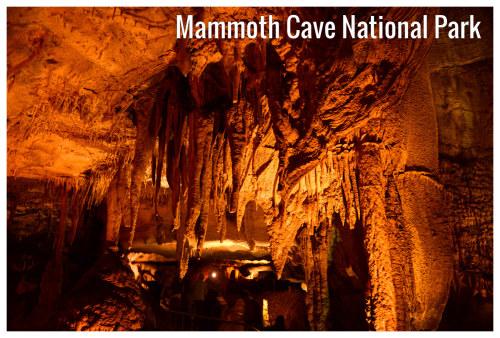
December
Weather in December
Temperature
December comes with a decrease in the average high-temperature, falling from a moderate 57.2°F (14°C) in November to a chilly 46.4°F (8°C). Mammoth Cave National Park temperatures generally rest at a low of 28.4°F (-2°C) during the December nights.Rainfall
In Mammoth Cave National Park, during December, the rain falls for 12 days and regularly aggregates up to 4.72" (120mm) of precipitation. Throughout the year, there are 126 rainfall days, and 50.63" (1286mm) of precipitation is accumulated.Daylight
With an average of 9h and 42min of daylight, December has the shortest days of the year.On the first day of December, sunrise is at 6:40 am and sunset at 4:27 pm. On the last day of the month, sunrise is at 6:58 am and sunset at 4:37 pm CST.
Sunshine
The months with the least sunshine are January and December, with an average of 4h of sunshine.UV index
January and December, with an average maximum UV index of 2, are months with the lowest UV index. A UV Index reading of 2, and below, represents a low threat to health from exposure to the Sun's UV radiation for ordinary individuals.Note: The maximum daily UV index of 2 in December interprets into the following recommendations:
Most individuals face no major issues with lengthy exposure to the sun, but children, infants, and individuals with fair skin always require protection. UV radiation is strongest from the Sun during midday; protect yourself by staying in shaded areas. Consider a wide-brim hat essential for effective sun defense covering your face, neck, and eyes.
Published by: Weather U.S. | About Us
Data Sources | Weather Forecasting & Climate
Frequently asked questions
What are December temperatures?
How much does it rain in Mammoth Cave National Park in December?
What is the month with the shortest days?
How many hours of daylight does Mammoth Cave National Park have in December?
What time are sunrise and sunset in December?
What are the months with the least sunshine?
How many hours of sunshine does Mammoth Cave National Park have in December?
When is the lowest UV index?
What is the UV index reading in December?

Average temperature in December
Mammoth Cave National Park, KY
- Average high temperature in December: 46°F
The warmest month (with the highest average high temperature) is July (88°F).
The month with the lowest average high temperature is January (41°F).
- Average low temperature in December: 28°F
The month with the highest average low temperature is July (66°F).
The coldest month (with the lowest average low temperature) is January (23°F).

Average rainfall in December
Mammoth Cave National Park, KY
- Average rainfall in December: 4.7"
The wettest month (with the highest rainfall) is May (5").
The driest month (with the least rainfall) is October (3").

Average rainfall days in December
Mammoth Cave National Park, KY
- Average rainfall days in December: 12 days
The month with the highest number of rainy days is March (13 days).
The months with the least rainy days are September and October (8 days).

Average daylight in December /
Average sunshine in December
Mammoth Cave National Park, KY
- Average daylight in December: 9h and 4min
The month with the longest days is June (Average daylight: 14h and 42min).
The month with the shortest days is December (Average daylight: 9h and 42min).
- Average sunshine in December: 4h
The month with the most sunshine is June (Average sunshine: 10h).
The months with the least sunshine are January and December (Average sunshine: 4h).

Average UV index in December
Mammoth Cave National Park, KY
- Average UV index in December: 2
The months with the highest UV index are June and July (UV index 10).
The months with the lowest UV index are January and December (UV index 2).